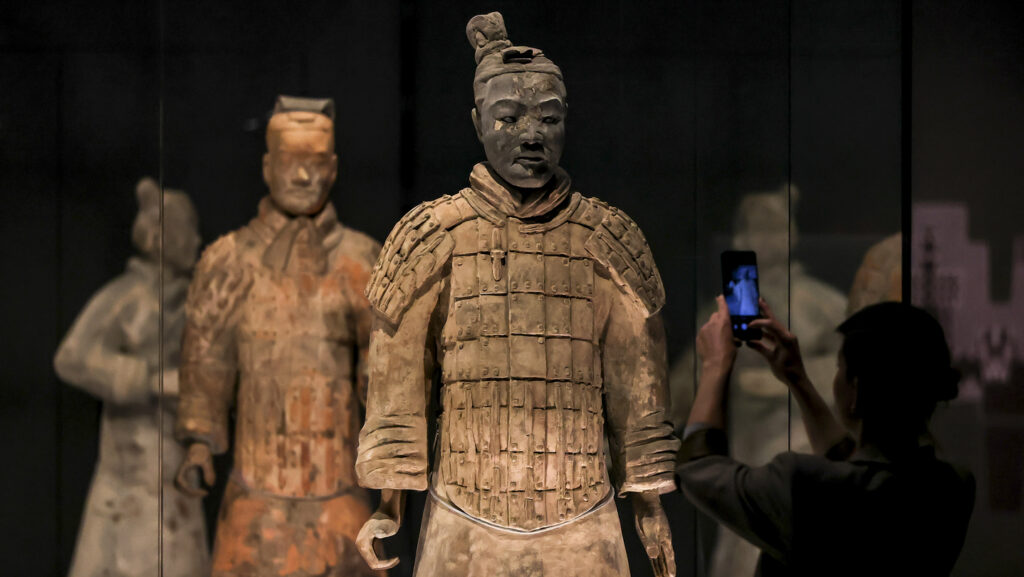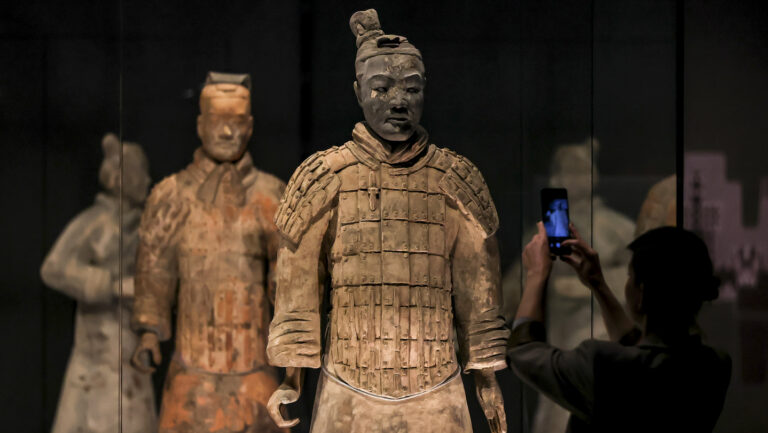The following is an adapted version of an article written by Lázár Pap, originally published in Hungarian in Magyar Krónika.
America—the new world, the land of opportunity, the land of the free. In the 19th and 20th centuries, hundreds of thousands of Hungarians left their former lives behind to cross the Atlantic and try their luck Far Far Away, that is, ‘Beyond the Óperencia’, as Hungarian fairy tales go. In its series, Magyar Krónika looks at the meeting points of America and Hungary through the Hungarian diaspora living in the US. In this part, let us explore the story of a 1848 émigré, László Újházy, who established a settlement with his family and other Hungarian refugees.
As we wrote in an earlier article in our series, following the suppression of the 1848–49 Revolution, Lajos Kossuth’s tour of the United States in 1851–52 saw an increasing number of Hungarian emigrants and immigrants arriving in the United States.
László Újházy, who was initially regarded as the leader of both American and Hungarian immigrants, was among the first to arrive overseas in December 1849. Originally from Budamér near Kassa (now Košice, Slovakia), Újházy was a politician representing Sáros County and, as a comes, was considered the only radical republican member of the Upper House. He also took part in the fighting, recruiting a volunteer army, which he led in Görgey’s winter campaign, and then served as government commissioner in the fortress of Komárom. After the castle was handed over to the imperial troops, he and his family set off for the United States via Hamburg and England.
Újházy effectively represented Kossuth in America until the latter arrived. In light of this, he can indeed be considered the leader of the emigration in the US in the early days. He himself put the reason for his arrival as follows: ‘Tyranny drove us to these shores.’ Újházy and his companions were warmly welcomed, and President Zachary Taylor greeted them in a letter, offering them protection and expressing his hope that, in time, they would consider America their second home.
‘[Újházy] can indeed be considered the leader of the emigration in the US in the early days’
Újházy quickly realized that they would have to prepare for a longer stay, as the political situation in Hungary was stable. He decided that the emigrants should stick together and settle in one place so that they could prepare to restart the revolution when the opportunity arose. After his arrival, he wrote to Kossuth’s confidant, Ferenc Pulszky: ‘My favourite idea is that all Hungarian emigrants and the remnants of our revolution should gather here, because only in this free country, where all our activities are unrestricted, can we organize ourselves strongly and with some hope of success for the rebirth of our homeland.’
At first, few shared his views; as long as American enthusiasm lasted, especially after Kossuth’s arrival, Hungarian emigrants, who otherwise had no marketable skills, did not see the need for such close cooperation. Later, however, they had to realize that in the long run, they could not survive solely on the fact that they were refugees from the war of independence and direct followers of Kossuth. Without language skills and qualifications, they were lost. Of course, some exceptions easily found employment in their civilian professions, for example, as engineers or doctors. However, for intellectuals involved in politics in their homeland, or nobles with military experience, the situation often seemed hopeless. Sooner or later, they took on any job they could find, even underpaid factory jobs—some even founded a male choir.
Returning to Újházy’s plans, he wanted to establish a settlement to gather Hungarian emigrants, wait for Kossuth there, and gather strength to restart the fight for freedom. Újházy tried to get the Congress to secure land for them, but was unsuccessful. He decided that he and his small group would set out and claim some of the already surveyed federal land for themselves. They wandered for four months until they reached southern Iowa, near the Thompson River, where they settled: ‘We will not settle down permanently until Kossuth arrives, because either he will join us, or if he wishes to establish a larger settlement elsewhere, we will move with him.’
The only problem with this idea was that Kossuth did not plan to stay. However, all the same, more and more Hungarian emigrants decided to join them. In the summer of 1851 a reporter from The New York Times visited the settlement, which had been named New Buda:
‘The countryside is dotted with ridges, narrow gorges, and occasionally wide valleys covered with rich soil 1–3 feet thick; its fertility is evident in the abundance of grass, flowers, and fruit. The Thompson River is about 50 meters wide and meanders slowly through Decatur County, but it is too shallow to be navigable…The river is surrounded by a 1–3 mile wide strip of forest, consisting mainly of sweet maple, black walnut, white oak, and elm trees.’
‘The Újházy family had strayed too far from the Americans and other emigrants, even though the population of the settlement had initially grown’
When Kossuth arrived, they met him in St Louis. However, the former governor stated that he had no plans for New Buda and considered Újházy’s initiative to settle in the border region a serious mistake. In his opinion, they had completely isolated themselves from American society and had effectively lost the opportunity to fight for Hungarian freedom. Kossuth was right: the Újházy family had strayed too far from the Americans and other emigrants, even though the population of the settlement had initially grown. In addition to Hungarians, New Buda, which consisted of a chain of independent farms and could hardly be called a town, attracted mainly Germans. In its heyday, it was home to about 30–40 Hungarians, but by the end of the decade, its population had dwindled, and by 1880, it was practically deserted. Újházy was among the first to leave the settlement he had founded, partly because of the weather. The southern areas were much more favourable for agriculture, but at first, he did not want to move to a slave state. Eventually, he gave in and sold his farm for $800. Two years after the tragic loss of his wife, he left New Buda in March 1853. He dug up his wife’s coffin and took it with him on a wagon to Texas, where he founded a new settlement called Sírmező.
Újházy, who was strongly opposed to slavery, entered the service of President Lincoln during the American Civil War. He became consul in Ancona, Italy, from December 1862 until his resignation in 1864. Some sources report that he was already in office when he fought alongside Garibaldi in the Battle of Aspromonte on 29 August 1862, where he was taken prisoner. Thanks to the intervention of the American ambassador, he was released. He returned to the United States and lived in seclusion on his estate until his death in 1870. His body, along with that of his wife, was brought home to Budamér by their eldest son Farkas.
This article is based on research by István Kornél Vida.
Read the previous parts of the series below:
Click here to read the original article.







